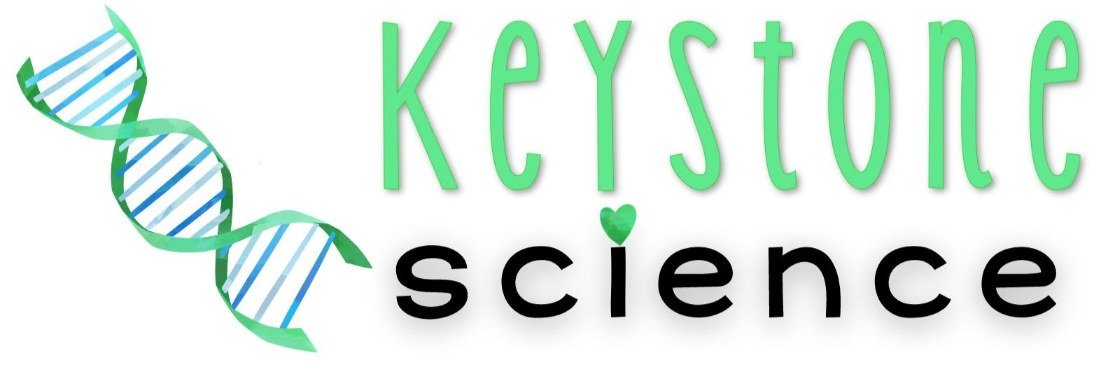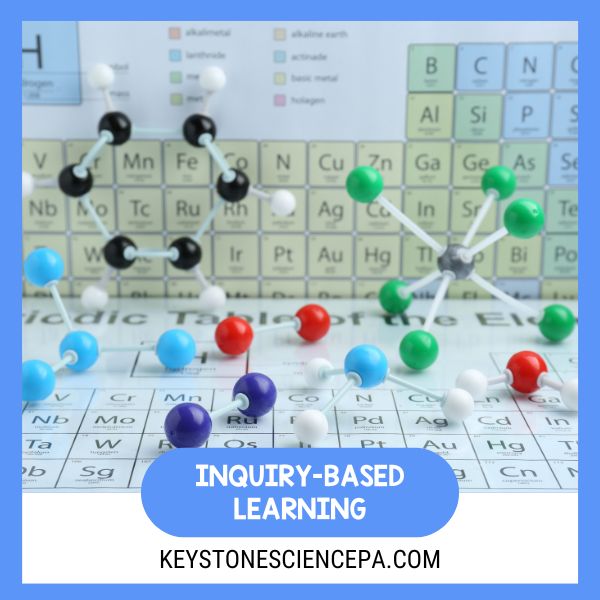Welcome to Part 2 of the blog series on inquiry-based learning in the high school science classroom!
In last week’s blog we introduced inquiry-based learning, its key characteristics, and provided additional resources to guide your own learning.
This week you’ll learn strategies for incorporating inquiry-based learning in your secondary science classroom.
If you’re brand new to inquiry based learning, it can feel overwhelming and intimidating.
So if you’re feeling that way, you’re not alone.
It requires a total mental paradigm shift, and a change in the way we teach.
This takes a lot of time, practice, and self-coaching when it comes to our mindset.
Here are some strategies and tactics to consider when you’re switching to inquiry-based learning in your classroom:
1. Start with Guided Inquiry
Begin by structuring your inquiries with a level of guidance to support students’ understanding and provide a framework for their investigations. For example, at the beginning of the school year provide students with structured lab investigations (give them materials and specific procedure to follow).
Gradually release responsibility to students as they become more proficient in the inquiry process. So as the year goes on, encourage students to use their knowledge of the content and the scientific process to first write their own procedures, then determine their own materials (given what is available in the classroom), to ultimately, giving students a driving question at the end of the school year and they will be able to construct a controlled, inquiry investigation independently at the end of the school year.
During this process, you will scaffold their learning by asking open-ended questions, providing relevant resources, and offering guidance on research methods or experimental design.
This approach helps students build confidence and develop the necessary skills for independent inquiry.
2. Encourage Student Questions
Foster a culture of curiosity by encouraging students to ask questions.
Begin each lesson or unit by eliciting their prior knowledge and inviting them to pose inquiries. These questions will drive their investigations and shape the direction of the learning process.
Emphasize that all questions are valuable and support students in refining and prioritizing their inquiries.
By prioritizing student questions, you empower them to take ownership of their learning and spark their natural curiosity.
3. Facilitate Hands-on Experiences
Inquiry-based learning thrives on active engagement and experiential learning.
Provide opportunities for students to engage in hands-on experiments, fieldwork, or real-world investigations.
This hands-on approach allows students to collect data, analyze evidence, and draw conclusions, fostering a deeper understanding of scientific concepts.
Incorporate technology, manipulatives, and resources to support their investigations and enable them to explore scientific phenomena in a meaningful way.
If you need new ways to engage your students in hands-on labs, check out what I have available in my webstore to help you re-engage your students in science!
If you need to see a model to explore how to do this, Mystery Science has a great YouTube channel:
4. Foster Collaboration and Communication
Encourage collaboration and communication among students throughout the inquiry process. Design activities that promote teamwork, such as group investigations, discussions, or presentations.
Collaborative learning allows students to share ideas, engage in meaningful dialogue, and learn from one another’s perspectives.
Create a supportive and inclusive classroom environment that values diverse viewpoints and encourages active participation.
Need a way to foster this collaboration and communication in your high school classroom? I have a few things that might help with that: Bioethics Debate and Vanishing of the Bees Project-Based Unit.
5. Reflect and Iterate
Regularly reflect on the progress of your students and the effectiveness of your inquiry-based approach.
Evaluate what worked well and identify areas for improvement.
Engage students in reflection activities, such as journaling or group discussions, to help them process their learning experiences and make connections to the broader scientific concepts.
Use this feedback to refine your teaching strategies and adjust the level of inquiry to meet the needs of your students.

Inquiry Based Learning Benefits
I mentioned the benefits of inquiry based learning in the section above about the key characteristics.
But sometimes, we just need an easy-to-read list that we can share with someone else! (TL;DR)
So here are my favorite benefits of inquiry based learning:
- Stimulates curiosity and engagement in students.
- Develops critical thinking and problem-solving skills.
- Enhances conceptual understanding of scientific concepts.
- Encourages collaboration and communication among students.
- Promotes long-term retention of knowledge.
- Sparks a love for learning and a deeper interest in science.
- Fosters creativity and innovative thinking.
- Builds resilience and perseverance in the face of challenges.
- Prepares students for real-world problem-solving and decision-making.
- Empowers students to take ownership of their learning journey.
Looking for some low or no-prep ways to implement these steps in your classroom? Check out some of these products below to get you started:
- Guided Inquiry: Graphing Periodic Trends
- Student Questions: Daily Response Sheet
- Hands-On Experiences: pH of Household Substances Inquiry Lab
- Collaboration & Communication: Inquiry Lab Peer Review Rubric
- Reflection & Evaluation: Real Life Stoichiometry Practice
Your Next Steps
Need more support integrating an inquiry based learning approach into your instruction?
I’d love to help you!
Here are some ways I can support you:
- Sign up for my email newsletter list for tips and ideas every two-ish weeks
- Click here to connect with me on Instagram
- Need lesson plans and activity ideas? Click here to browse my web store.













